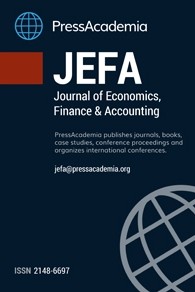THE JORDANIAN STOCK EXCHANGE: CAN IT DELIVER WHAT IS EXPECTED?
Financial development in Jordan should be underestimated for two main reasons. First, the total assets of licensed banks constitute about 180 percent of Gross Domestic Product (GDP). Second, the country boasts one of the oldest stock markets in the region. The Amman Securities Exchange (ASE) was established in 1978 and its current capitalization is equivalent to about 75 percent of GDP. Given Jordan’s socio-economic challenges, and the fact that successive governments have been suffering from large and consistent budget deficits, it does not make economic sense that the ASE has no active secondary bonds market. The issued government securities are sold to all licensed banks. This observation is unfortunate. Avoiding the concentration of financial intermediation in banks makes sense. In addition, whilst a well-developed bond market allows banks to transfer their risk (securitization), such a market makes the conduct of monetary policy more effective and contributes to budgetary discipline by exposing the government to financial discipline. This paper argues for the need for developing a government securities market in Jordan. In addition, the paper examines the already listed shares in terms of their liquidity cost. Based on the empirical results, it is reported that listed shares suffer from high liquidity cost. This finding and its implications are useful in recommending what must be done to develop an active bonds market.
Keywords:
-,
___
- Almarzoqi, R., S. Ben Naceur and A. Kotak (2015). What matters for financial development and stability?, IMF Working Paper No. 15/173.
- Ang, J. (2008). A survey of recent developments in the literature of finance and growth. Journal of Economic Surveys 22, 536-576.
- Barajas, A., R. Chami, and S. Yousef (2013). The finance and growth nexus re-examined: Do all countries benefit equally?, IMF Working Paper No. 13/130.
- Ben Naceur, S. and R. Zhang (2016). Financial development, inequality and poverty: Some international evidence. IMF Working Paper No. 32.
- Brunetti A., (1997). Political variables in cross-country growth analysis. Journal of Economic Surveys 11, 163-190.
- Cherif, M. and C. Dreger (2014). Institutional determinants of financial development in MENA countries. German Institute for Economic
- Research, Discussion paper No. 1422.
- Ding, M., B. Nilsson and S. Suardi (2013). Foreign institutional investors and stock market liquidity in China: State ownership, trading activity and information asymmetry. Working Paper No. 14, The Knut Wicksell Centre for Financial Studies, Lund University.
- Gagnon, M. and C. Gimet (2013). The impacts of standard monetary and budgetary policies on liquidity and financial markets: International evidence from the credit freeze crisis. Journal of Banking and Finance 37, 4599-4614.
- Goyenko, R., A. Subrahmanyam and A. Ukhov (2011). The term structure of bond market liquidity and its implications for expected returns.
- Journal of Financial and Quantitative Analysis 46, 111-139. Greenwood, J. and Jovanovic, B. (1990). Financial development, growth, and the distribution of income. Journal of Political Economy 98, 1107.
- Hamadi, H. and C. Bassil (2015). Financial development and economic growth in the MENA region. Comparative Economic Studies 57, 598
- Jain, P. (2003). Institutional design and liquidity of stock exchanges around the world. Working Paper, Indiana University.
- Jiang, C., J. Kim and R. Wood (2011). A comparison of volatility and bid-ask spread for NASDAQ and NYSE after decimalization. Applied Economics 43, 1227-1239.
- Kaldor N. (1970). The case for regional policies. Scottish Journal of Political Economy 17, 337-348.
- Krugman P. (1991). Increasing returns and economic geography. Journal of Political Economy 99, 183-99.
- Levine, R. (1991). Stock markets, growth, and tax policy. Journal of Finance, 46, 1445-1465.
- Lucas R. (1988). On the mechanics of economic development. Journal of Monetary Economics 22, 3- 42.
- Myrdal G. (1957). Economic theory and underdeveloped regions, Hutchinson Publications.
- North D. (1990). Institutions, institutional change and economic performance. Cambridge: Cambridge University Press.
- Romer P. (1986). Increasing returns and long run growth. Journal of Political Economy 94, 1002-1037.
- Solow, R. (1956). A contribution to the theory of economic growth. The Quarterly Journal of Economics 70, 65-94.
- USAID (2010). Developing government bond markets. FS Series No, 12.
- Yayın Aralığı: Yılda 4 Sayı
- Başlangıç: 2014
- Yayıncı: PressAcademia
